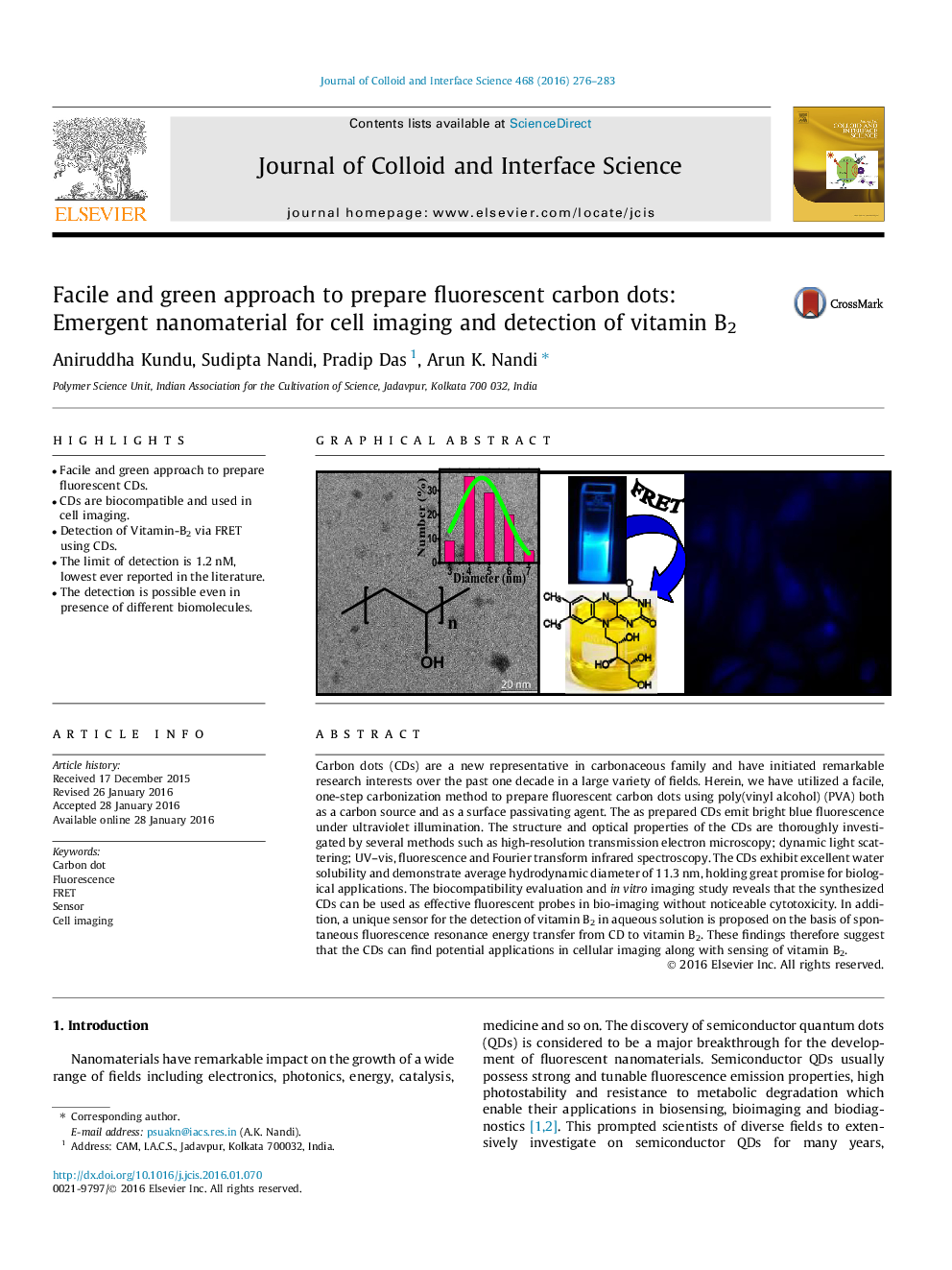| Article ID | Journal | Published Year | Pages | File Type |
|---|---|---|---|---|
| 606396 | Journal of Colloid and Interface Science | 2016 | 8 Pages |
•Facile and green approach to prepare fluorescent CDs.•CDs are biocompatible and used in cell imaging.•Detection of Vitamin-B2 via FRET using CDs.•The limit of detection is 1.2 nM, lowest ever reported in the literature.•The detection is possible even in presence of different biomolecules.
Carbon dots (CDs) are a new representative in carbonaceous family and have initiated remarkable research interests over the past one decade in a large variety of fields. Herein, we have utilized a facile, one-step carbonization method to prepare fluorescent carbon dots using poly(vinyl alcohol) (PVA) both as a carbon source and as a surface passivating agent. The as prepared CDs emit bright blue fluorescence under ultraviolet illumination. The structure and optical properties of the CDs are thoroughly investigated by several methods such as high-resolution transmission electron microscopy; dynamic light scattering; UV–vis, fluorescence and Fourier transform infrared spectroscopy. The CDs exhibit excellent water solubility and demonstrate average hydrodynamic diameter of 11.3 nm, holding great promise for biological applications. The biocompatibility evaluation and in vitro imaging study reveals that the synthesized CDs can be used as effective fluorescent probes in bio-imaging without noticeable cytotoxicity. In addition, a unique sensor for the detection of vitamin B2 in aqueous solution is proposed on the basis of spontaneous fluorescence resonance energy transfer from CD to vitamin B2. These findings therefore suggest that the CDs can find potential applications in cellular imaging along with sensing of vitamin B2.
Graphical abstractFigure optionsDownload full-size imageDownload high-quality image (317 K)Download as PowerPoint slide
